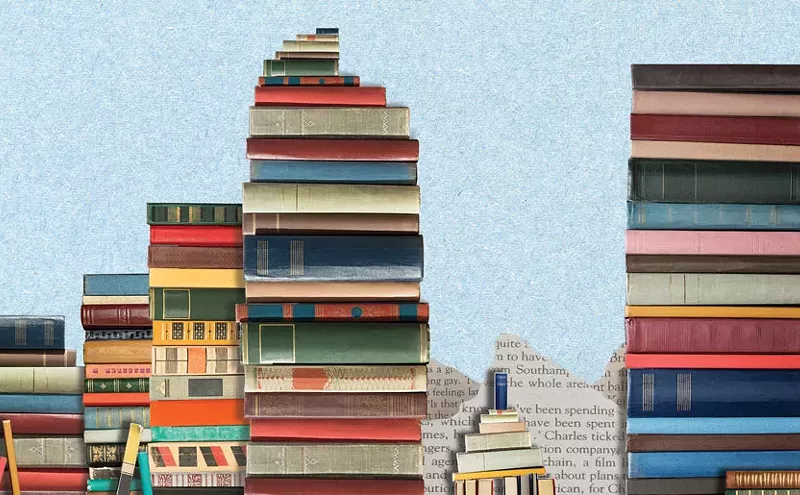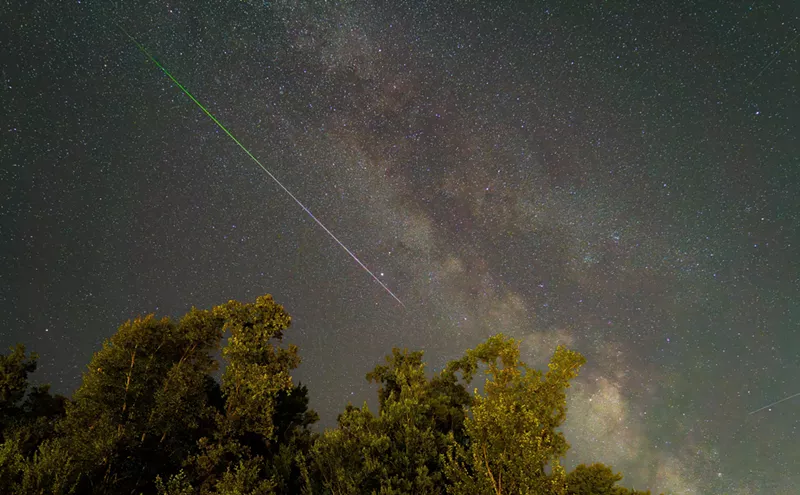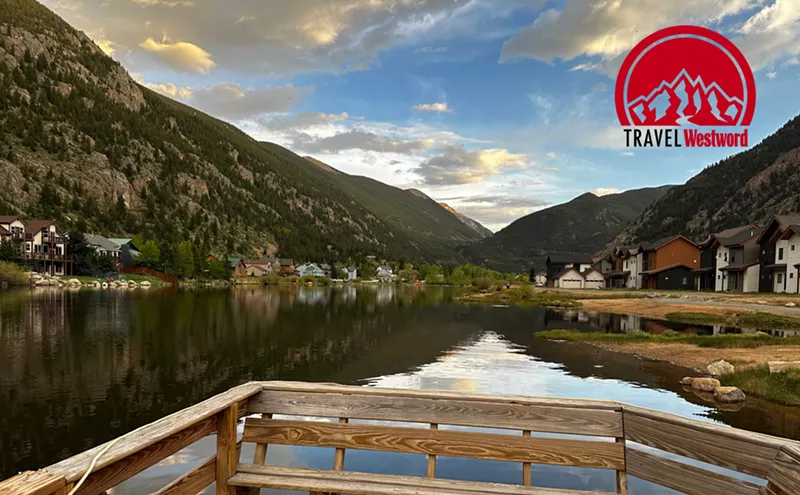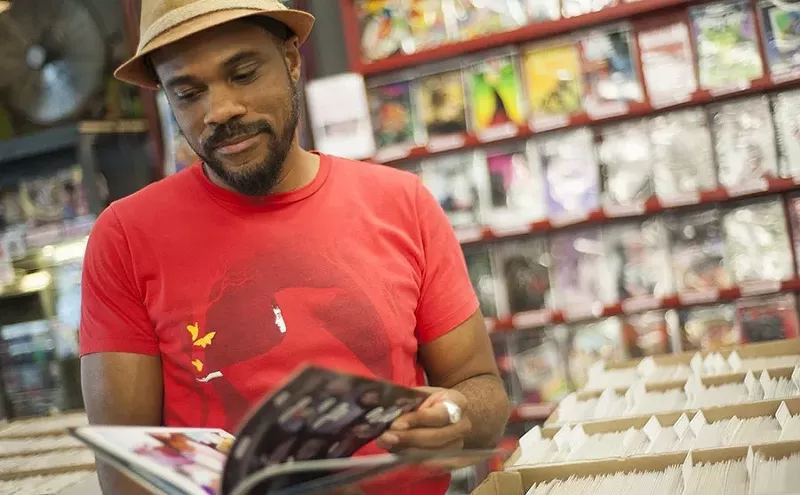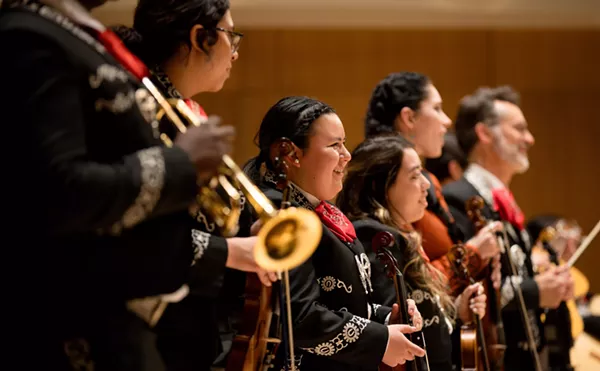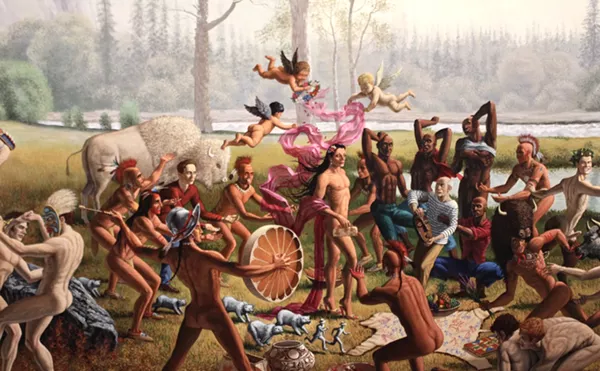For half a century, the art world's chattering class — critics and curators, mostly — has been declaring abstraction dead and buried. In the '60s, there was pop art, which was thought to be edging out abstraction. In the '70s, it was neo-dada and postmodernism. The '80s saw the development of neo-expressionism, while conceptual realism was declared the winner in the '90s. But all along, abstract artists — not only in painting and sculpture, but in various new media including video and installation — refused to cooperate. Now, in the early 21st century, abstraction is as strong as ever, and if you don't believe it, look to the just-closed Whitney Biennial or last year's Biennale in Venice. Or, more conveniently, run down to Robischon Gallery or to Goodwin Fine Art to see how new abstraction, mostly conceptual abstraction, just keeps on coming.
For the spectacular Material Abstraction, Robischon has assembled ten artists, many of whom are sampled in depth. Five are from Colorado, and their work reveals the sophisticated state that contemporary abstraction has attained in our region — no real surprise, as the approach has been embraced around here since the 1930s.
The front section of the gallery is given over to both freestanding and wall-mounted sculptures by legendary Colorado artist Linda Fleming. In 1968, she came to Colorado with her soon-to-be husband, Dean Fleming, and fellow artist Tony Magar, and became a prime mover of a small — though expanding — group of artists who founded the Libre cooperative in the southern part of the state. Libre wound up being the upscale version of Drop City, and unlike that utopian if unrealized dream, Libre still exists. Since then, Fleming has divided her time between Libre, New York and San Francisco.
The Fleming pieces at Robischon are made from cut and pierced metal that has been plated or otherwise finished. In "Portal," made of chrome-plated steel, Fleming has created a lace-like composition that has an overall organic shape. The cut-outs in the heavy metal plate are the predominant element, and their placement has been determined by linear abstract lines that overlap and intersect each other. Though also employing voids as a main element, "Twister" is markedly different from "Portal" or its cousin, "Whirlwind." In "Twister," Fleming has created a conventionalized tornado made of flat planes joined to create a squared-off spiral.
In the same space as the Flemings is a series of paintings on panels by New Yorker Lisa Stefanelli. These paintings with looping monochrome compositions are so entirely compatible with the Flemings that you couldn't be blamed if you thought everything was by the same artist. Particularly related is Stefanelli's interest in open spaces as a key element.
In the intimate Viewing Room Gallery in back are ten collages and mixed-media sculptures by hot emerging artist Tyler Beard, who graduated in 2010 with a master's from the University of Colorado at Boulder, where he specialized in ceramics. His wall sculptures at Robischon really hit the spot. In "He Smoked Cigars and Told Funny Jokes," Beard has assembled a mostly flat set of forms accented by a bit of wire. Similar in conception is "The Sun Wouldn't Come and the Rain Wouldn't Go." Both look as though Beard pulled off fragments from abstract paintings — with big areas of pure color — and then hung these seemingly liberated chunks right on the wall.
In the warren of rooms that make up the extended space to the south, another up-and-coming young artist, Derrick Velasquez, is the subject of a full-blown solo. Velasquez, who was born and raised in California, moved to Colorado from Ohio, where he attended graduate school. A conceptual artist, he relies on the properties of gravity to create the specific shapes of these recent pieces. Most are fairly simple and express the same straightforward idea. A bracket of maple is attached to the wall, with pieces of bookbinding vinyl stacked on top and spilling over the edges on the sides.
Velasquez uses a different formula for the most ambitious piece in the group, "Untitled (Draped Structure)," which is fabulous. In it, rectangles of vinyl hang from hidden extensions that act as hooks to secure the fabric. This piece — though not the others — resembles a soft John Chamberlain, the swatches of vinyl standing in for the wrecked car parts that Chamberlain employed. Drapery is one of those age-old subjects for artists, going back at least to antiquity, with representational painters and sculptors at times obsessed with capturing the way fabric falls on garments or in the backgrounds of portraits or still lifes. So the Velasquez sculptures are not only interesting and beautiful, they also carry on a long tradition in the fine arts, which is surprising when you consider how radical they are.
Near to the Velasquezes are small samples of the work of two very well-known Colorado artists, Terry Maker and John McEnroe. Using resin and other materials, Maker has created wall sculptures that take the form of open books. McEnroe also uses resin in his three small "Sandbag" sculptures, which are vaguely anthropomorphic and closely associated with the artist's much-maligned "National Velvet" in the Platte Valley, which has provided titillation to many for its suggestion of erotic body parts.
In the gallery to the rear are nearly a dozen works made from repurposed materials by New Mexico's Ted Larsen. "Lost in Space," a flattened constructivist assemblage that's a three-dimensional axiomatic drawing, and "Rodeo Clown," a closely associated sculpture, are knockouts, with both containing the unlikely combination of hard-edged geometry and soft-toned expressionism.
It's impossible for me to mention all the notable attractions in Material Abstraction, so go check it out for yourself. And while you are at it, swing by Goodwin Fine Art to take in Bryan Nash Gill: Cut Wood, which functions as a perfect chaser to the Robischon show, since it's also about contemporary abstraction.
Nash, a nationally known artist who lives in Connecticut, is interested in wood in the form of cut beams and logs. The front space at Goodwin is filled with an installation that comprises two cubes made of cut-up pine beams. One, left in its natural color, has been taken apart and arranged around the floor. Gallery owner Tina Goodwin asked different people to arrange the pieces any way they chose. The week I saw the show, Karl Kister had used the beam fragments to outline two rooms, with other guest curators including Simon Zalkind and Yoshitomo Saito.
The other cube — which is displayed as a cube, as opposed to being taken apart — is colored, but only because Nash used its parts to make geometric relief prints and covered them with different shades of printer's ink. These prints are done in a chine collé technique in which the transfers of the wood images are done on papers that are attached through the workings of the press to a larger sheet.
There are many other compelling pieces, including "Ash," a relief print of a section of a log, revealing the tree's rings, and "Three Stacks," a paper mural that wraps around a corner in the small gallery behind the office. Also striking is "Snowflake," in which identically cut pieces of wood have been slotted together in a symmetrical arrangement. I love the way Nash conflates natural materials and idealized shapes — opposites, if you think about it.
Bryan Nash Gill at Goodwin — just like Material Abstraction at Robischon — helps to prove that abstraction is still a major force in contemporary art.


